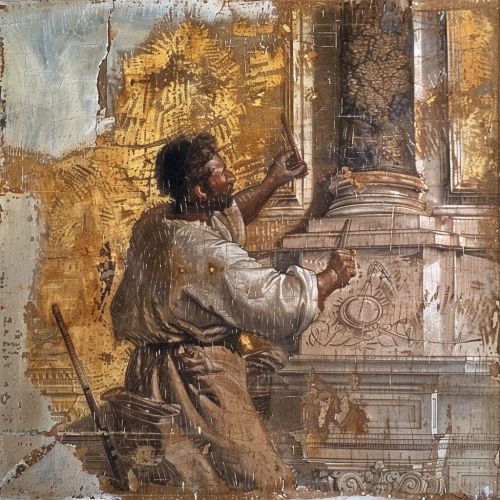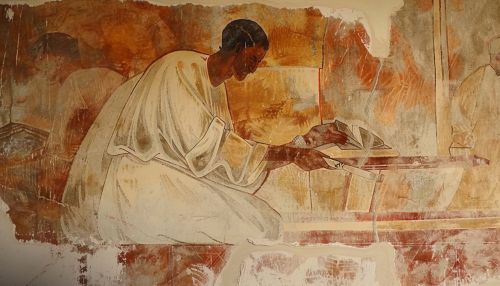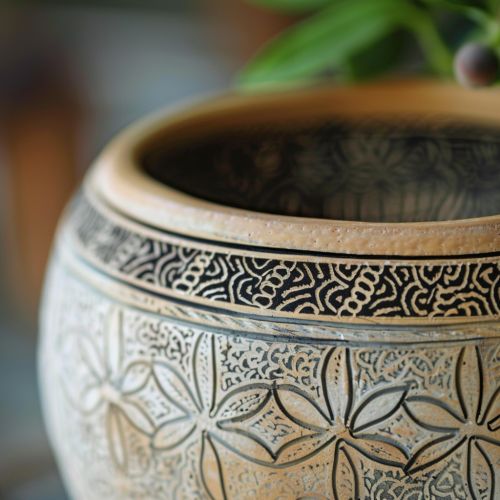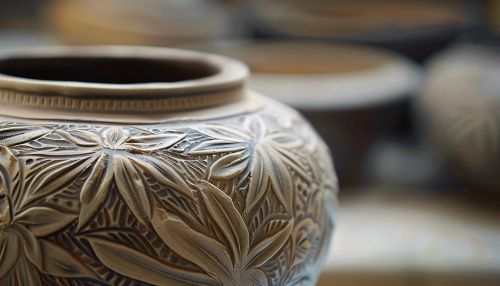Sgraffito
History
Sgraffito (also spelled scraffito) is a technique used in painting, pottery, and glass, which consists of putting down a preliminary surface, covering it with another, and then scratching the superficial layer in such a way that the pattern or shape that emerges is of the lower colour. The term originates from the Italian word "sgraffiare", which means "to scratch". This technique has been employed by artists since time immemorial, with some of the earliest examples dating back to the prehistoric era.


Technique
In the context of wall decoration, the sgraffito technique involves the application of layers of plaster tinted in contrasting colours to a moistened surface. The artist then scratches or incises the top layer to reveal parts of the underlying layer, creating a detailed design or image. This technique is often used in combination with other decorative techniques such as fresco painting and Mural art.
Historical Use
Sgraffito has been used extensively throughout history, from ancient times to the present day. It was a popular method of wall decoration in the classical world, particularly in ancient Rome, where it was used to decorate the exteriors of buildings. The technique was also employed during the Renaissance period, where it was used to create intricate designs on the facades of buildings. In the 20th century, sgraffito experienced a resurgence in popularity, with artists such as Pablo Picasso and Diego Rivera incorporating the technique into their work.
Sgraffito in Pottery
Sgraffito is also a common technique in pottery. It involves applying layers of contrasting coloured slip to a leather-hard pot, and then scratching through the upper layer to reveal the clay body beneath. This technique allows for a high level of detail and complexity in the design, and is often used to create intricate patterns and images. The use of sgraffito in pottery dates back to the Neolithic period, and it continues to be a popular technique in contemporary ceramics.


Modern Usage
In modern times, sgraffito has been embraced by street artists and muralists, who use the technique to create large-scale public artworks. The technique is also used in interior design, where it is often employed to create textured surfaces and intricate wall designs. In addition, sgraffito continues to be a popular technique in pottery and ceramics, with many contemporary artists incorporating the technique into their work.
